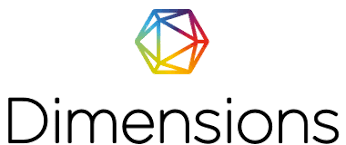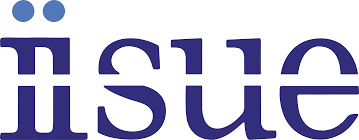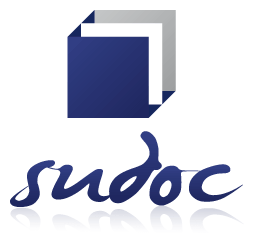Acap model and innovation in U-I relationship
DOI:
https://doi.org/10.19094/contextus.v16i2.1035Keywords:
Absorptive Capacity, University-Industry Relationship, Knowledge, Competitiveness, ACAP model.Abstract
The purpose of this study is to see how the relationship between universities and companies influences the latter’s absorptive capacity and therefore competitiveness. The work focused on multiple-case studies with three companies based at the technology incubator of Feevale, a university center in Brazil’s south. Data analysis was based on Zahra and George’s (2002) ACAP model. Both diversity of search forms and harnessing new knowledge showed to be crucial in distinguishing those companies from others in the same sector. It is supposed that not only the university-business relationship may influence all businesses’ absorptive capacity and competitiveness but also achieving and sustaining competitive advantage is directly related to realized ACAP through innovation and product development as well as to potential ACAP through flexibility in reconfiguring basic resources. The ACAP model was very useful for analyzing the ability to acquire knowledge and turn it into innovation.
References
ALVARENGA NETO, Rivadávia Correa Drummond. Gestão do conhecimento em organizações: proposta de mapeamento conceitual integrativo. São Paulo: Saraiva, 2008.
ARGOTE, Linda; MIRON-SPEKTOR, Ella. Organizational learning: from experience to knowledge. Organization Science, v. 22, n. 5, p. 1123-1137, 2011.
BOLISANI, Ettore et al. The emergence of knowledge management. In: BOLISANI, Ettore; BRATIANU, Constantin. Emergent knowledge strategies. Cham: Springer, 2018. p. 23-47.
CARDOSO, Leonor; GOMES, Duarte. Knowledge Management and Innovation: mapping the use of knowledge in organizations. In: MESQUITA, A. Technology for creativity and innovation: tools, techniques and applications. Hershey: IGI Global, 2011. p. 237-266.
CAVALCANTI, Marcos; GOMES, Elisabeth; PEREIRA, André. Gestão de empresas na sociedade do conhecimento. Rio de Janeiro: Campus, 2001.
COHEN, Wesley M; LEVINTHAL, Daniel A. Absorptive capacity: A new perspective on learning and innovation. Administrative Science Quarterly, v. 35, n. 1, 1990.
COSTA, Vânia Maria Gomes; CUNHA, João Carlos. A universidade e a capacitação tecnológica das empresas. In: ENCONTRO NACIONAL DE PROGRAMAS DE PÓS-GRADUAÇÃO EM ADMINISTRAÇÃO. Anais... Florianópolis, Brasil, Anpad, 2000.
DALKIR, Kimiz. Knowledge management in theory and practice. Cambridge, MA: The MIT Press, 2011.
GOLD, Andrew H; MALHOTRA, Arvind; SEGARS, Albert H. Knowledge management: An organizational capabilities perspective. Journal of Management Information Systems, v. 18, n. 1, 2001.
JONES, Oswald. Developing Absorptive Capacity in Mature Organizations: The Change Agent’s Role, Management Learning, v. 37, n. 1, 2006.
LOPES, Edson Gonçalves. Conexão entre estratégia e conhecimento na criação de valor adicional para stakeholders expressivos: uma nova forma de organizar os contextos capacitantes. Tese (Doutorado em Administração de Empresas) – Fundação Getúlio Vargas, Brasil, 2013.
MOURA, Renata; SERRA, Fernando; VILS, Leonardo; SCAFUTO, Isabel. Capacidade absortiva em clusters de baixa intensidade tecnológica. Revista de Administração FACES Journal, v. 16, n. 1, p. 123-141, 2017.
NEGRI, Fernanda. Determinantes da Inovação e da Capacidade de Absorção nas Firmas Brasileiras: qual a influência do perfil da mão de obra? In: NEGRI, J. A.; NEGRI, F.; COELHO, D. (eds.). Tecnologia, Exportação e Emprego, Brasília: IPEA, 2006.
NONAKA, Ikujiro; TAKEUCHI, Hirotaka. Criação de conhecimento na empresa: como as empresas japonesas geram a dinâmica da inovação. Rio de Janeiro: Campus, 1997.
OLIVEIRA, Mírian; CALDEIRA, Mário; ROMÃO, Mário. Knowledge management implementation: an evolutionary process in organizations. Knowledge and Process Management, v. 19, n. 1, p. 17-26, 2012.
PLONSKI, Guilherme Ary. Cooperação universidade-empresa na Iberoamérica: estágio atual e perspectivas. In: SIMPÓSIO DE GESTÃO DA INOVAÇÃO TECNOLÓGICA. Anais... São Paulo, Brasil, USP/NPGCT/FIA, 1994.
PORTER, Michael. Competitive Strategy: Techniques for Analyzing Industries and Competitors. New York: The Free Press, 1980.
REZENDE, José Francisco. Gestão do conhecimento, capital intelectual e ativos intangíveis. Rio de Janeiro: Elsevier, 2014.
SCHUMPETER, Joseph Alois. Teoria do desenvolvimento econômico: uma investigação sobre lucros, capital, crédito, juro e o ciclo econômico. São Paulo: Abril Cultural, 1997.
SEGATTO-MENDES, Andréa Paula; SBRAGIA, Roberto. O processo de cooperação universidade empresa em universidades brasileiras. Revista de Administração da USP, v. 37, n. 4, 2002.
STAL, Eva. A contratação empresarial da pesquisa universitária. In: SIMPÓSIO DE GESTÃO DA INOVAÇÃO TECNOLÓGICA. Anais... São Paulo, Brasil, USP/NPGCT/FIA, 1994.
TEECE, David J.; PISANO, Gary; SHUEN, Amy. Dynamic capabilities and strategic management. Strategic Management Journal, v. 8, n. 7, 1997.
UNESCO. Knowledge Societies concept. Available in: . Accessed in Jul. 10, 2005.
WOLFFENBUTTEL, Alexandre Pinto. Avaliação do processo de interação universidade-empresa em incubadoras universitárias de empresas: um estudo de caso na incubadora de empresas de base tecnológica da UNISINOS. Dissertação (Mestrado em Administração). Universidade Federal do Rio Grande do Sul, Porto Alegre, Brasil, 2013.
YIN, Robert K. Case study research: design and methods. 3. ed. Porto Alegre: Bookman, 2005.
ZAHRA, Shaker A.; GEORGE, Gerard. Absorptive capacity: A review, reconceptualization, and extension. Academy of Management Review, v. 27, n. 1, 2002.
Downloads
Additional Files
Published
How to Cite
Issue
Section
License
The authors, while doing the submission, accept the notice below:
We authors hold the copyright related to our paper and transfer Contextus journal the right for the first publication with a Creative Commons’ international license of the modality Attribution – Non-commercial 4.0, which in turn allows the paper to be shared providing that both the authorship and the journal’s right for initial release are acknowledged.
Furthermore, we are aware of our permission to take part in additional contracts independently for non-exclusive distribution of the version of our work published in this journal (e.g. publishing it in an institutional repository or as a book chapter), while acknowledging both the authorship and the journal’s initial publication.
We also certify that the paper is original and up to this date has not been released in any other journal, Brazilian or of another nationality, either in Portuguese or another language, as well as it has not been sent for simultaneous publication in other journals.
Last, we not only know that plagiarism is not tolerated by Contextus but also certify the paper presents the sources of passages from cited works, including those authored by ourselves.









3.png)


1.jpg)



1.jpg)


1.jpg)






.jpg)



1.jpg)

1.jpg)


1.jpg)

1.jpg)
1.jpg)
2.png)




1.jpg)
2.jpg)

1.jpg)





1.jpg)


1.jpg)
1.jpg)
